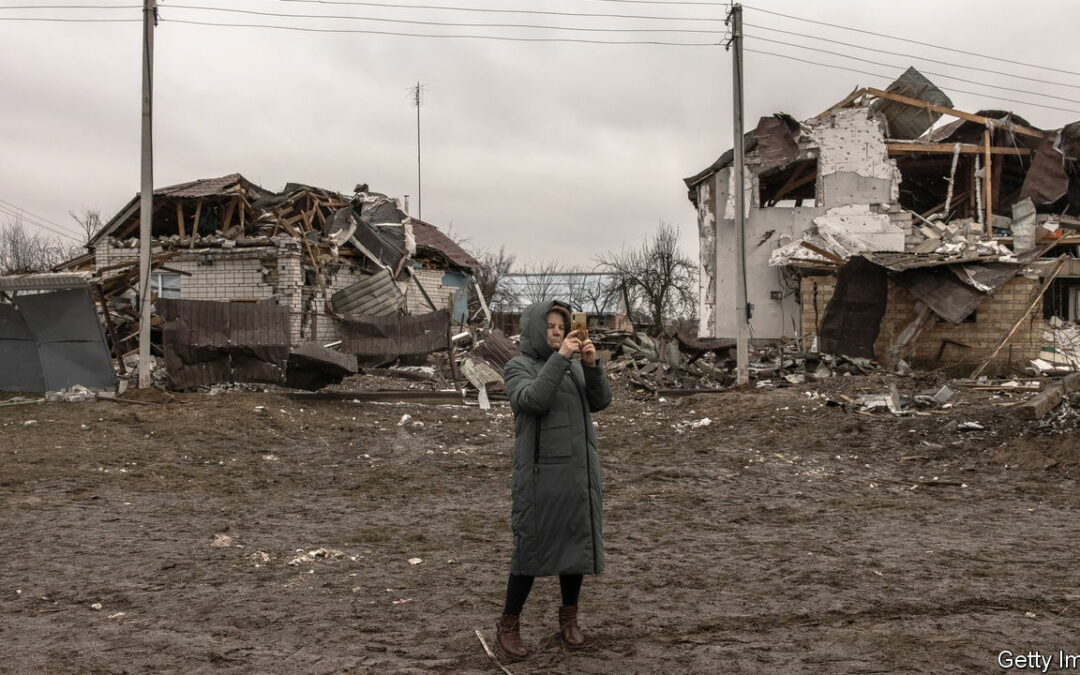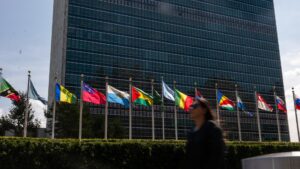IN A MODERN warzone anyone with a smartphone is a potential source of military intelligence. Since the early days of the Russian invasion, Ukraine has been crowdsourcing information from civilians. The idea is not new. During the second world war British volunteers phoned in early warning of air raids. Ukraine’s digitally enabled iteration is more powerful. It makes it more expensive for Russia to occupy Ukrainian territory and gives Ukrainians in occupied areas a way to resist. But it also has a dark side.
Ukraine’s Ministry of Digital Transformation set up the eVorog (“eEnemy”) chatbot in March 2022, just weeks after Russia invaded. It seems to be the first government-developed technology of its kind. Using a smartphone the chatbot takes users through a list of questions to ascertain what they saw, where and when. The interface is hosted on Telegram, an encrypted messaging platform, and uses another government app, Diia, to check the identity of those submitting information. The phone’s satellite navigation function confirms the location. Evaluating the quality of the information supplied through eVorog, by matching it with other sources, is crucial. It would be wasteful to attack a site from which the enemy had already departed, and disastrous to strike one occupied by civilians. By December eVorog had received more than 450,000 reports.
In unoccupied Ukraine civilians use eVorog to report the location of unexploded bombs and other munitions. Another app, ePPO, allows users to record the flight of aircraft, missiles and drones. Ballistic missiles, which travel high and fast, cannot be easily tracked by civilians. But the Shahed-136, an armed drone made by Iran and used by the Russians to attack Ukrainian infrastructure, cruises slowly at low altitude and is often spotted. Information submitted through ePPO helps fighter jets shoot down drones. It can also alert teams manning anti-missile weapons.
Civilian intelligence has led to strikes on Russian bases in occupied territory, although confirmation of its use by Ukraine risks retaliation against civilians by Russia. In September residents of the city of Kherson, then under Russian control, used eVorog to report the location of a warehouse where Russian military vehicles were stored. The building was destroyed by a strike the next day. Buildings used as barracks have also been struck. Collaborators with the Russians have also used apps, disguised as games on mobile phones, to record Ukrainian artillery movements.
People who submit information via eVorog from Russian-occupied areas take big risks. The app advises users to delete from their phones any evidence they have uploaded. Digital partisans face potential reprisals. The laws of war protecting civilians do not apply to those who play an active part in hostilities. Passing on tactical information counts as such participation. That makes the security of the app important. In 2020 there was a huge leak of personal information from Ukraine’s driving-licence database. Diia, the app used to verify eVorog users, also stores digital driving licences. Officials denied that the leak was linked to Diia. But if similar identifying information for eVorog users were discovered by Russian intelligence services, it might prove to be a death sentence for informants.
Ukraine’s digital transformation, which includes the introduction of digital passports, is among Europe’s most successful. In 2019 Volodymyr Zelensky, Ukraine’s president, enthused that Diia, which has since been adopted by Estonia, could become the “state in a smartphone”. But in a time of war that phrase carries new resonance. The most controversial aspect of eVorog is that it allows Ukrainians to report collaborators. Its developers used as an example of collaboration a Ukrainian woman who was made pregnant by a Russian soldier, implying that victims of rape might be deemed traitors. They apologised. The purpose of the app, they said, was “identifying the enemy, not condemning the actions of Ukrainians”. ■
Read more of our recent coverage of the Ukraine crisis.









